Pakatan Harapan Performance in PRU-14
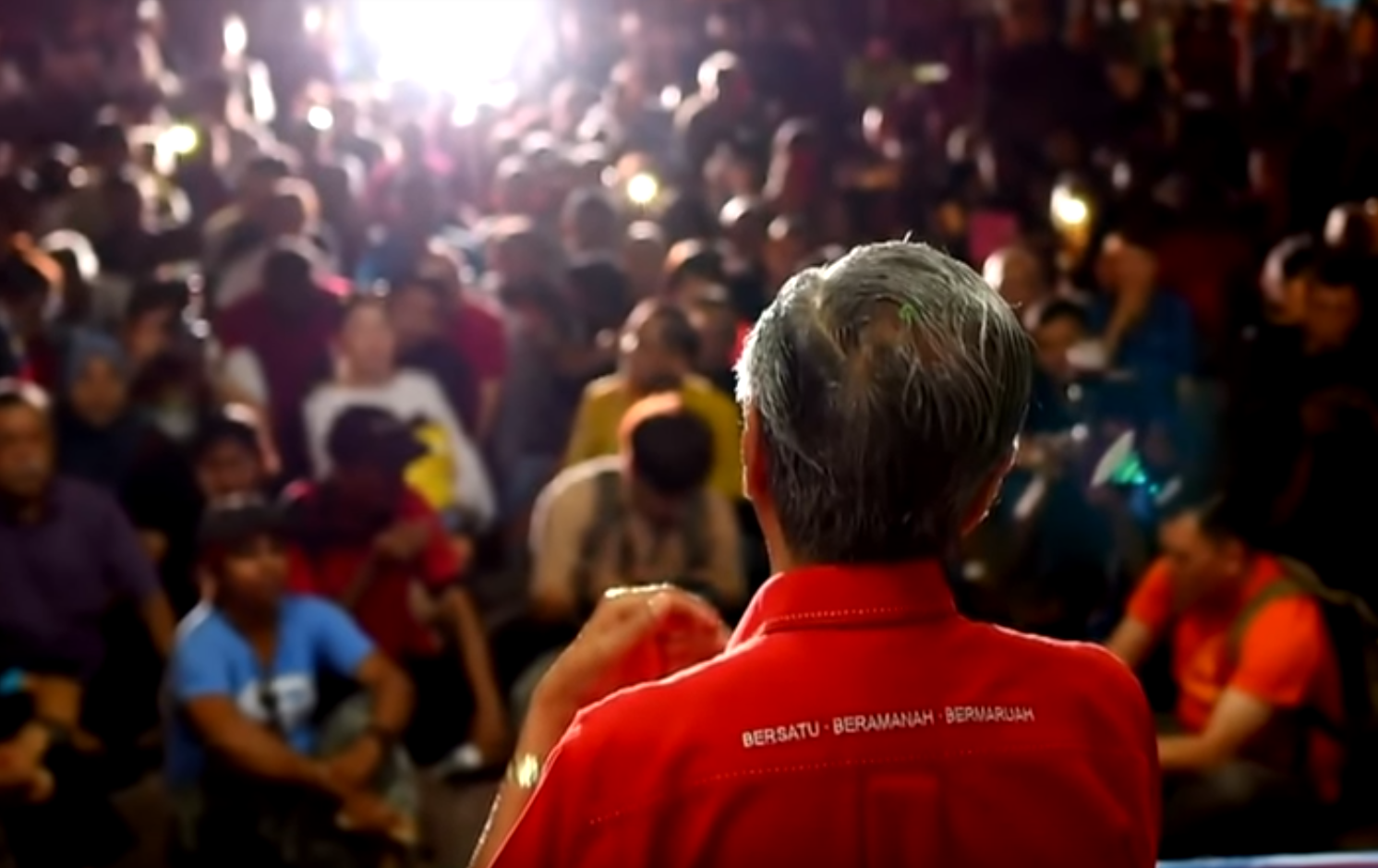
Pakatan Harapan competed at every MP seats (165 seats in total) in the Peninsular Malaysia. The coalition managed to won more than half of their contesting seats. A total of 97 MP seats were won by Pakatan Harapan.
PPBM
As a consequence of receiving unwanted seats, PPBM achieved the poorest result among the four component parties in PH. The party only won 13 out of 52 seats they contested in.
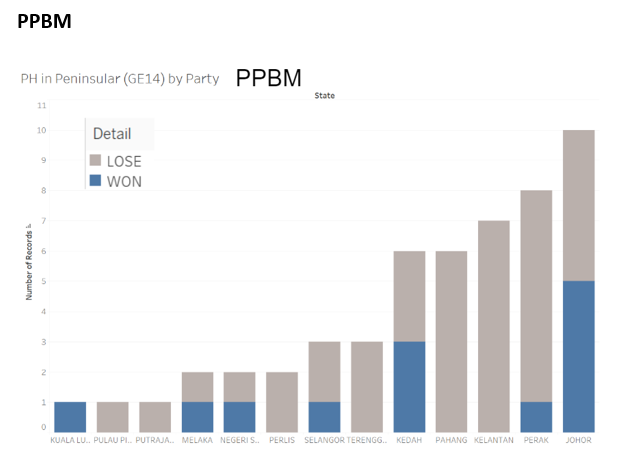
As we can see from the PRU-14 result, the party did well in Kedah and Johor because of Mahathir, Mukhriz, Muhyiddin and Syed Saddiq. Because of PPBM, Pakatan Harapan will be able to form the state government in Kedah and Johor
However, PPBM failed to gain any seats from Kelantan nor Terengganu. It is because of PAS strong roots in both states. The people there will choose PAS if they want to vote for the opposition.
Furthermore, PPBM did not contribute any seat in the unswing state of Pahang and Perlis. The party was also allocated the tough seat, Putrajaya, and failed. But, they won the only seat (Titiwangsa) that they contested in Kuala Lumpur.
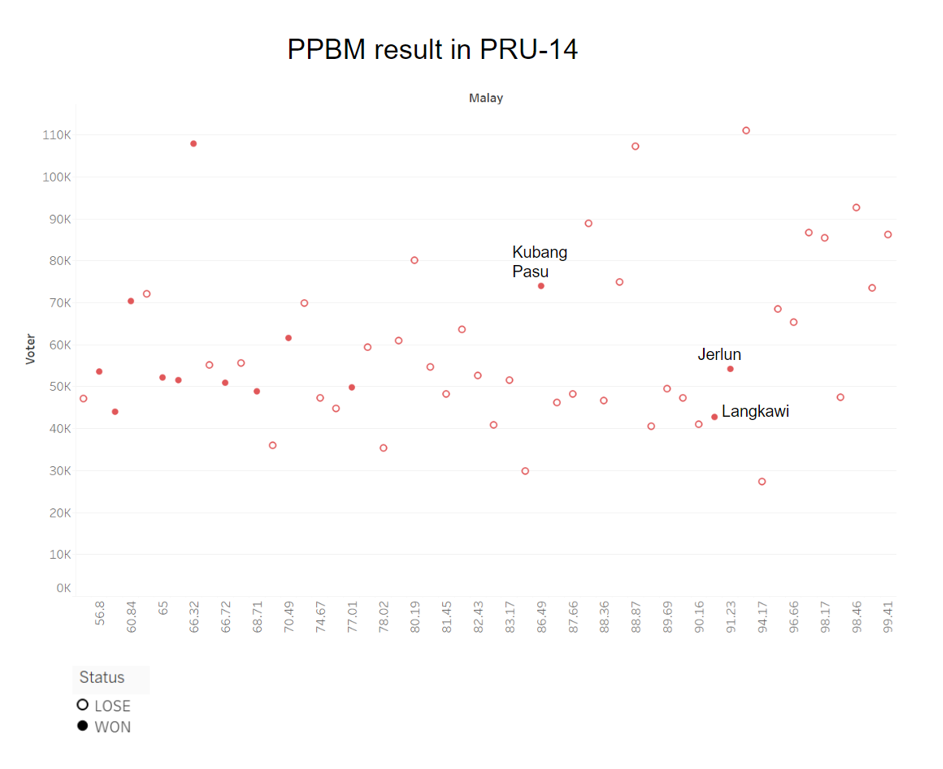
PPBM succeed in Kubang Pasu, Langkawi and Jerlun is because of Tun M. Kubang Pasu was Mahathir’s stronghold in the past, Mahathir competed in Langkawi and Mukhriz contested in Jerlun.
Except those three, PPBM actually did not gained any seats from districts that have high percentage of Malay demographic.
Perlis and Pahang have high percentage of Malay population. Additionally, Pakatan Harapan did not specifically target on those two states during their campaign. Therefore, PPBM did not able to enter those Barisan Nasional stronghold.
PKR
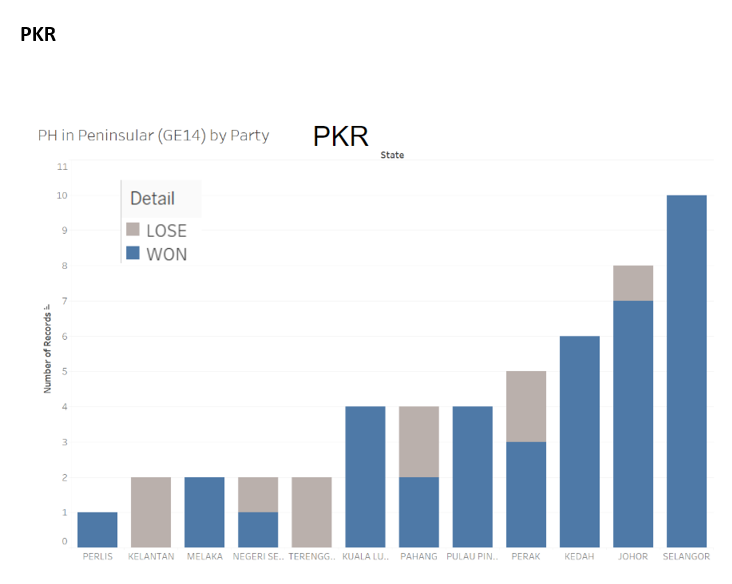
PKR had the best result in Selangor by winning 10 out of 10 parliamentary seats that they contested in. The reason is Selangor has been under PKR rule since 2008. The state has become a stronghold for PKR.
Besides Selangor, PKR won many districts because they hog the seats that they are confident to win. The party won all the seats they contested in Perlis, Melaka, Kuala Lumpur, Pulau Pinang, Kedah and Selangor. They only lost with the maximum of two seats for the rest of the states.
PKR won 7 MP seats in Johor, while PPBM earned 5 MP seats. But without PPBM, PH will not be able to form the state government. It is also the same case in Kedah, PKR won 6 seats and PPBM won 3 seats.
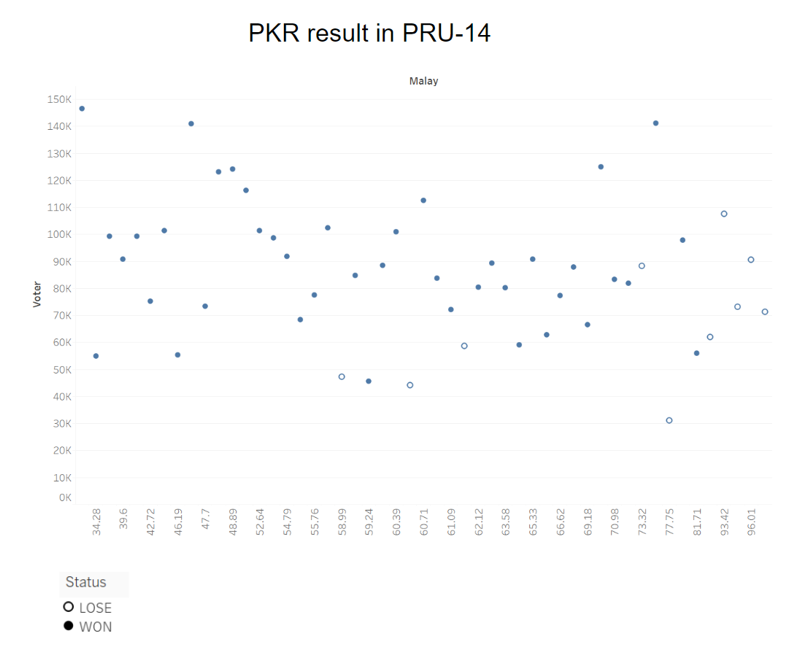
Compared to PPBM, PKR competed in districts that have less Malay voters. From the infographic, we can see that the higher the percentage of Malay voters, the less likely for PKR to win.
There will always be Malay voters that will vote for UMNO because the party have governed Malaysia for more than six decades. With UMNO rhetoric of DAP as the mastermind behind Pakatan Harapan coalition, it is difficult for PH to split the Malay votes from UMNO.
DAP
DAP reduced their contesting seats from 36 seats (PRU-13) to 35 seats (PRU-14). However, they achieved a better result by winning 33 seats in PRU-14 compared to winning 31 seats in PRU-13.

The party managed to snatch Bentong MP seat from its former incumbent, Liow Tiong Lai. Liow is the President of MCA at that time. The other 31 seats that won by DAP in PRU-13 were managed to be defend.
DAP and Penang is similar to PKR and Selangor. DAP took over Penang state government since 2008. Thus, they performed well in Penang.
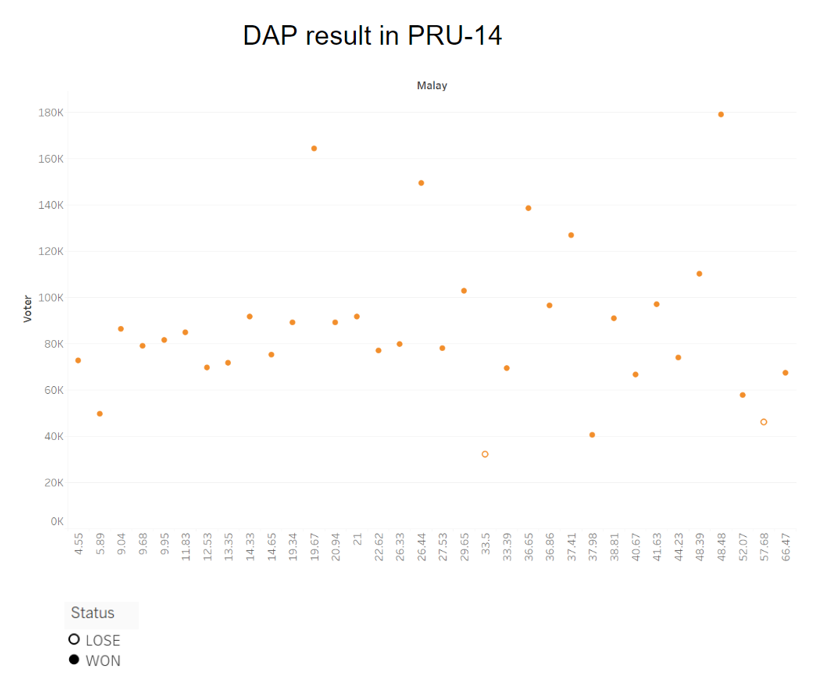
DAP only contest in seats that they are confident to win. The seats that they contested does not have more than 66.4% of Malay voters.
It is because DAP have been perceived as a Chinese party. There are very little of Malay representative in DAP. Majority of their prominent politicians are Chinese. To name a few, Lim Guan Eng, Lim Kit Siang, Tony Pua, Ong Kian Ming, Hannah Yeoh and others. So, it is best for DAP to avoid contesting in districts that have high percentage of Malay.
Amanah
For Amanah, they rebranded themselves as an Islamic modernism party. However, the amount of their contesting seats was greatly reduced to 27 seats. First, it is because they have to make way for PPBM. Second, their progressive ideology will not work well in the rural area as the people there are conservative. Amanah only won 11 seats in PRU-14.

With their new image, they managed to won all the five contesting seats in Selangor. The population there are from the urban area and the people there are much more secular.
However, Amanah failed to earn a single seat in Kelantan and Terengganu. The people there are loyal to the PAS brand. It is the legacy of the late Nik Abdul Aziz Nik Mat who the population there look up to, not just as a political leader, but also as a religious man. They called him “Tok Guru”. Amanah was labeled as a “betrayer” by PAS politicians.
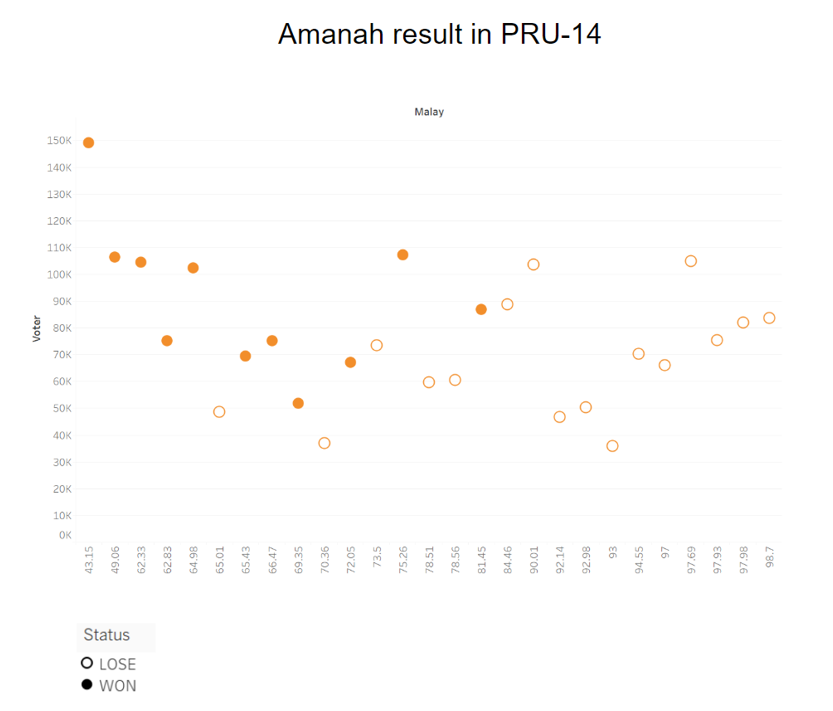
Amanah splitted from PAS and PAS did not performed well in PRU-13. Thus, Amanah cannot hog many seats for PRU-14.
Notable Amanah politicians who hog seats are Salahuddin Ayub (Pulai), Mujahid Rawa (Parit Buntar), Mahfuz Omar (Pokok Sena) and Khalid Samad (Shah Alam) because they were the incumbent at their respective seats.
For Mat Sabu he jumped from Pendang to Kota Raja because he failed to win the heart of the people in Pendang during PRU-13. Pendang is a rural district located in Kedah. It is a swing seat switching between PAS and BN. As the leader of Amanah he wouldn’t risk his chances of winning by contesting there. He need to win an MP seat for his political leverage.
Hence, Mat Sabu moved to compete in Kota Raja which is located at the outskirt of Selangor. Not exactly an urban area, but Kota Raja has been under Amanah rule since 2015. Then incumbent Siti Mariah Mahmud did not compete in PRU-14 to pave way for Mat Sabu.
Overall, Amanah win most of their seats from the lesser Malay majority areas.
Conclusion
PKR contributed the most MP seats with the total amount of 40 seats, while PPBM contributed the least at 11 seats. DAP had the best performance by 33 out of 35 contesting seats. When it comes to ratio, PPBM did the worst by only winning 11 out of 27 seats.

